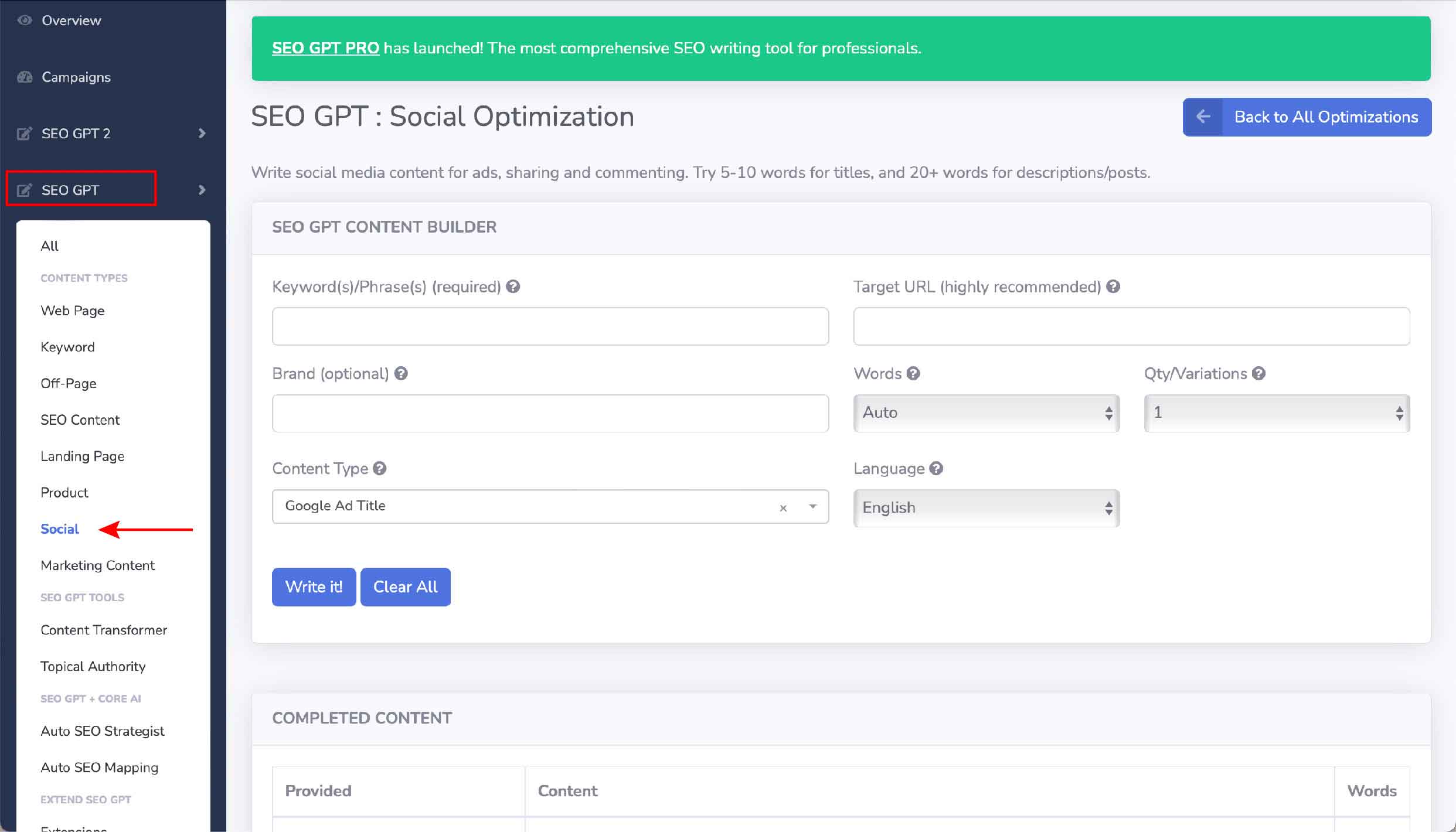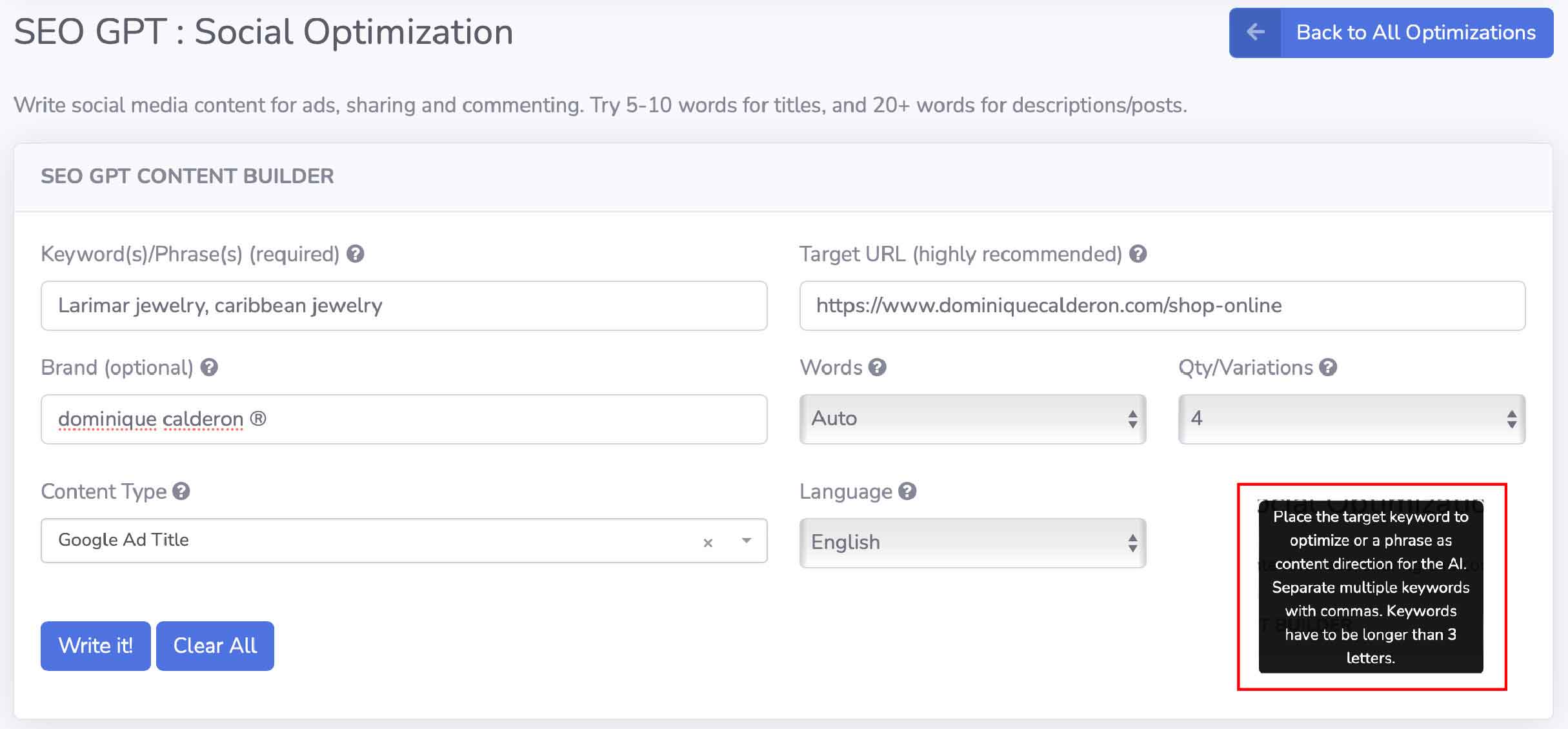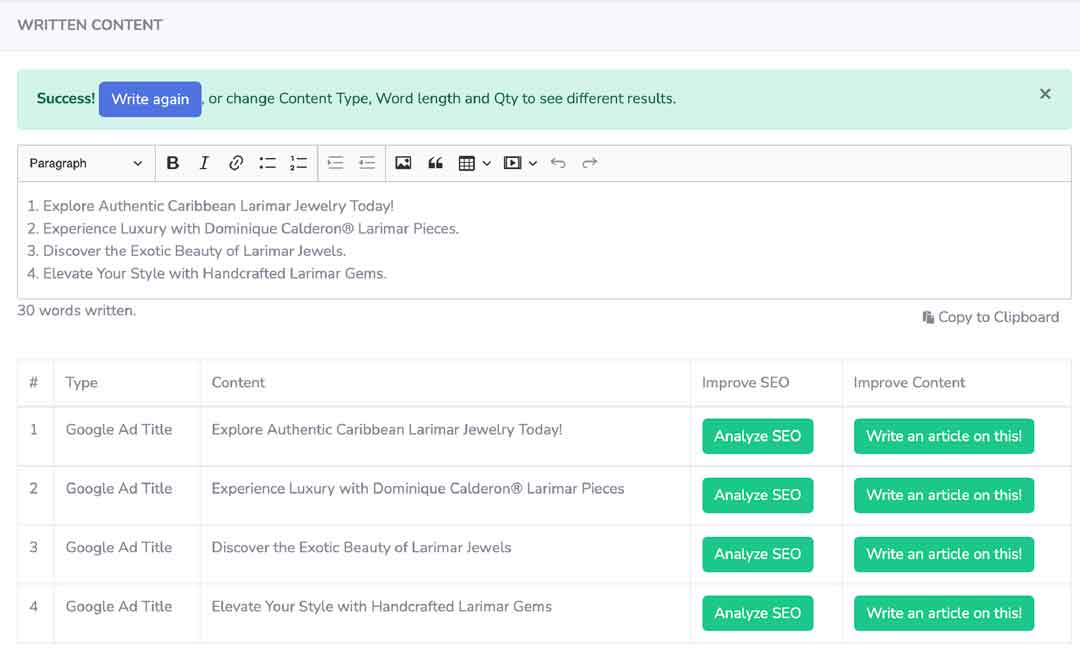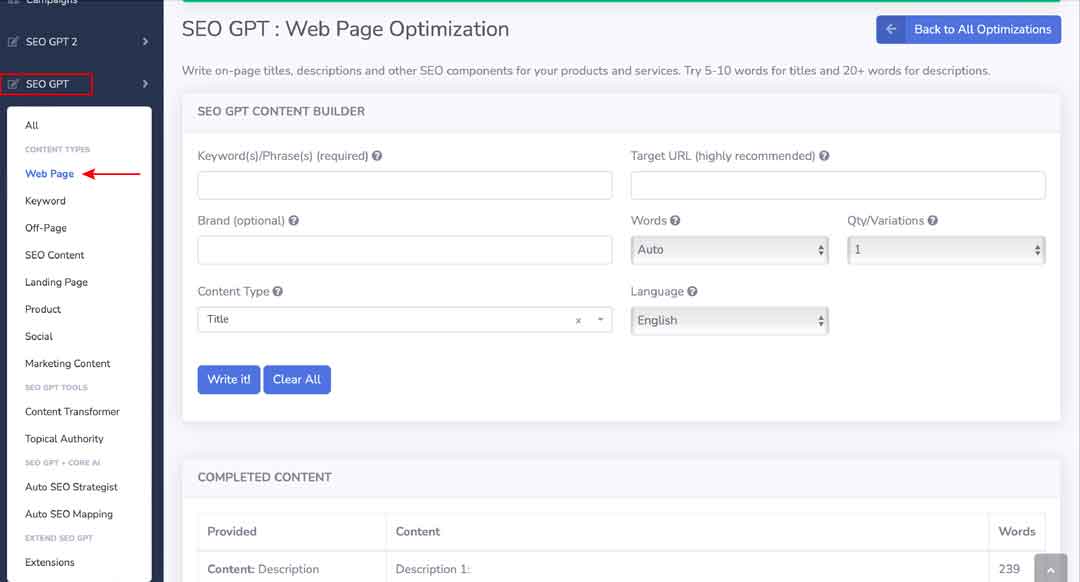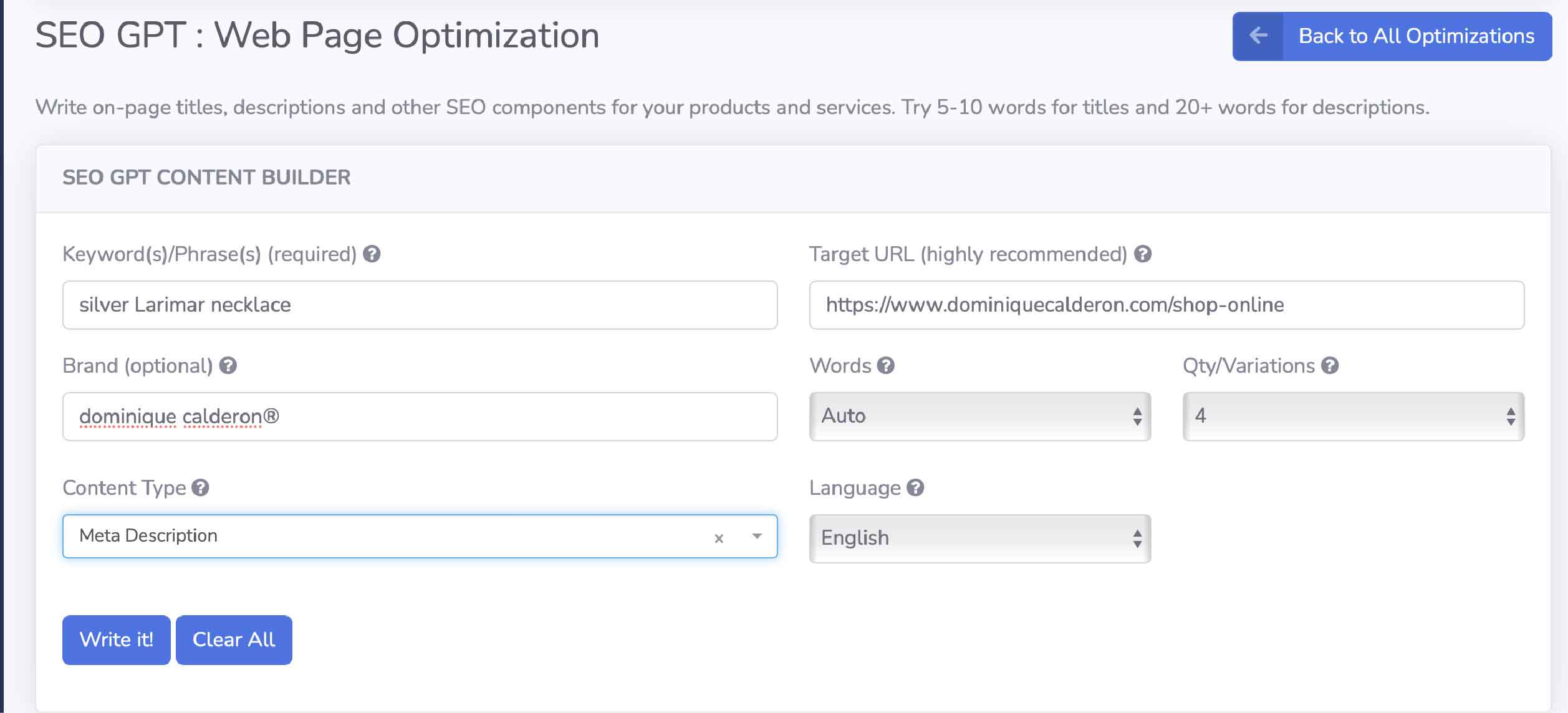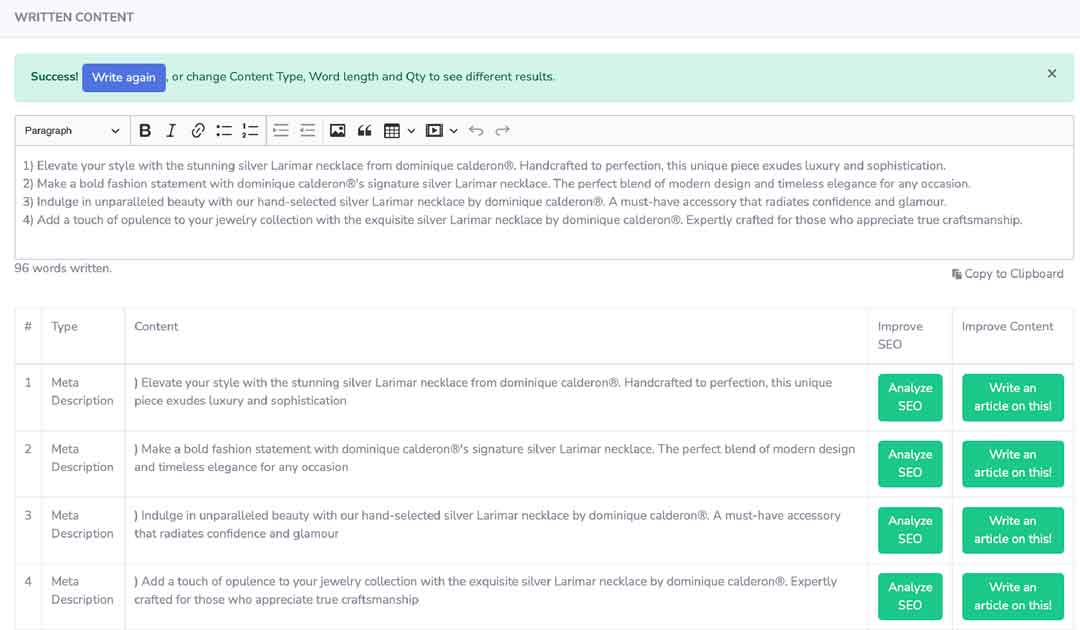Mastering SEO GPT is key to winning at Google Ads. You need great titles and descriptions that stand out. Think about what people search for online.
Some look up short words like “jewelry.” Others type long phrases for specific things they want to know or buy. Using the right keywords can help your ad show up in these searches.
Aim to use short ones for big topics and longer phrases for detailed searches. This way, you catch more eyes and get individuals interested in your offer.
Choosing Winning Keywords
When picking winning keywords, think about what individuals are searching for online. You aim to pop up when they search those terms. Start with head keywords.
These are short and often searched a lot. Use long-tail keywords; they attract the right traffic because they’re very specific. Also, look into ‘zero volume’ keywords, which seem like no one searches for them in SEO tools yet somehow bring people to your site. Don’t forget semantic keywords–synonyms and related words that help search engines connect your content with what people hunt for.
Every word you write should target a main keyword, along with some long tails and semantics. SEO writing AI can make finding the perfect blend easier without sounding forced. For each page on your website, pick one primary keyword it will revolve around, plus 2-4 semantic ones related in meaning to spread out over the content naturally.
Crafting Compelling Titles
With the rapidly changing digital landscape, establishing a strong online presence is crucial for businesses and individuals. Utilizing SEO GPT‘s Social Optimization feature is an effective strategy to achieve this goal.
Crafting a title that grabs attention is key for any Google Ad. It’s what your audience sees first. Think of it as the main door to your ad content.
A strong title makes people want to click and learn more. Now, remember, you have just seconds to catch their eye. Start by being clear and direct in your titles.
Maximize your online presence by logging into your SEO Vendor account and accessing the powerful features of SEO GPT. If you do not have an account, creating one is necessary to utilize this tool’s potential fully. Once logged in, navigate to the ‘Social Optimization’ feature within SEO GPT. This is where the magic happens.
To begin optimizing your social media posts, input essential details such as relevant keywords or phrases that are at least three words long. These serve as a guide for our AI technology to create content that aligns with your goals. Additionally, provide us with the URL of either your homepage or designated landing page so we can analyze its content and ensure alignment with our generated content.
Ensure that your brand name is included in the social media content generated for a strong brand identity. Select word count based on platform and content goals, with 5-10 words for titles and 20+ for descriptions/posts. Choose from up to five results of different types provided by SEO GPT.
Lastly, always test different titles against each other (A/B testing). This helps find which ones truly resonate best with users by comparing performance metrics such as click-through rates (CTR). Focus on clarity, relevance, emotional engagement, and consistent testing. This can significantly improve the effectiveness of your ad titles in drawing users to engage further.
Optimizing Meta Descriptions
Optimizing your website’s meta descriptions is crucial for improving search engine visibility and driving more traffic to your page. To make the most of your meta descriptions, we recommend following these simple steps.
Firstly, keep them concise yet informative. Aiming for around 155 characters will ensure that they are not cut off on search results pages using SEO GPT: Web Page Optimization tool, saving you one less headache when it comes to fitting the description within character limits and SEO best practices.
To access this tool, log in to your SEO Vendor account and navigate to the ‘Web Page Optimization’ section within the SEO GPT menu.
Enhancing your website’s SEO potential requires a tailored approach. As every piece of content on your site serves a distinct purpose, optimizing each element according to its role is crucial for success. This tool gives you access to various content types that cover all aspects of optimization.
By inputting essential details into our tool and following the process explained above, you can ensure your web pages are optimized for maximum impact. In this case, we’ve got you covered with expert recommendations for meta descriptions.
Additionally, matching your meta descriptions closely with each webpage’s content significantly improves click-through rates. By starting strong and including important keywords early on in the description, you increase the chances of ranking high in relevant searches and attracting potential visitors who are actively searching for topics related to yours.
Don’t underestimate the power of well-crafted meta descriptions—they can be a game-changer in boosting organic traffic and ultimately increasing conversions. So don’t overlook this crucial aspect when optimizing your website for a better online presence!
Enhancing User Experience with SEO GPT 2
In this part of our guide on mastering Google Ads with SEO GPT 2, we will explore enhancing user experience using AI. Users want helpful answers to their questions, and SEO GPT 2 can make your content findable, readable, and engaging.
Using AI to enhance content experience has become popular, but not all AI is created equal. That’s where SEO GPT 2 comes in—unlike other traditional AI content generators, it focuses on analyzing web pages and understanding the context of the intended audience. With factors like keywords, page content, and user intent, SEO GPT 2 creates highly relevant and engaging material that caters to both users’ needs and search engine algorithms.
What sets SEO GPT 2 apart is its ability to produce specific content to optimize each page. By avoiding generic shallow writing commonly found with other generators, businesses can differentiate themselves from competitors while attracting qualified leads for better results.
Remember, quality matters more than ever. Your content should answer people’s big questions and add new insights to what they already know. You can do this by drawing from reputable sources and including lived experiences where possible. SEO GPT 2‘s features come in handy here. With its customizable features, such as references and personas, you can tailor your content to voice, tone, and facts that align with your brand identity.
Now, onto checking facts—super important! Even though AI tools help craft creative outlines or suggestions, always double-check any data or statistics in your content against trustworthy references. Choosing the right tool for creating your text makes a difference scenario-wise.
Some tools excel at generating drafts quickly, while others offer better control over editing details for a polished final product. Lastly, remember that incorporating personal touches speaks volumes regarding authenticity. This helps establish a stronger connection with readers, increasing the brand’s trustworthiness.
Analyzing Competitor Ads Strategy
Start by picking common words your customers might use online. Use a private web window so what you see isn’t just based on what you usually look at. Look closely at the search page results (SERP) for every word.
Check out Google ads up top and down low on that page, along with regular search findings. See which companies are showing ads for those terms. Notice where their ads are placed and if they have extra parts like links or phone numbers to make them stand out more.
Really dig into how these other businesses talk in their ads. See how they describe what they offer in headlines, details, and any added info through extras. Look for common points across these Google advertisements and changes over time when looking at different keywords.
Leveraging Structured Data Markup
Organizing your site’s content in a clear format helps search engines understand it better. Think of structured data as a way to label and organize the content on your website so that Google and others can easily understand what you’re talking about. It’s like when books are sorted well; finding what you need becomes easier.
The big name here is Schema markup from Schema.org. This group got together to ensure everyone uses common tags for their web pages, which lets search engines show our sites more nicely in results. Using these tags tells Google exactly what each piece of your page means—be it an article, local shop information, or reviews.
One cool tool used by businesses is JSON-LD. You stick this code into the head part of your webpage HTML, but don’t worry; it won’t mess with how your page looks at all! It lets you clearly tell machines, like Google, that a section talks about a product or event.
This makes life easy for both code writers and people searching online. Adding extra information using JSON-LD scripts tagged according to Schema.org standards helps search engines work smarter and faster. This improves visibility, boosts trust, and enhances your SEO, elevating your position in the competitive digital landscape.
Adapting to Google Algorithm Updates
To stay ahead of Google’s updates, focus on high-quality content. Their latest changes aim to cut down low-value sites by nearly half. This means less unoriginal work in search results.
If your site relies on AI or external links with little quality control, you might see a drop in traffic or disappear from searches altogether. Google also manually removes sites that break its reputation rules by hosting poor content for better ranking chances. Even big names have felt this impact, but native ads remain untouched.
More so, Google’s use of AI to answer complex queries directly affects how much traffic your website gets. While aiming to improve accuracy and relevance, it could sideline human-made content, leading to significant dips in web visits. By focusing on producing exceptional content within your niche, tools such as SEO GPT and SEO GPT 2 can ensure consistent delivery of high-quality material without sacrificing authenticity or reader engagement despite these challenges.


